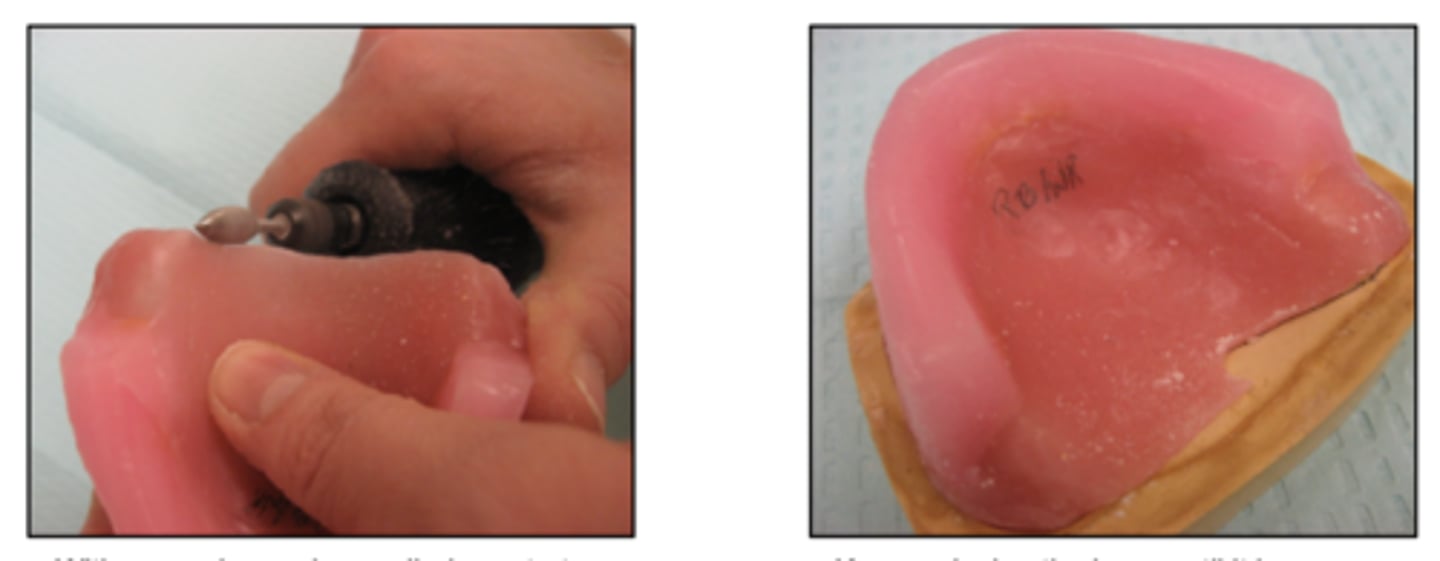Complete Denture Week 5 - Post Dam Mounting/Maxillo-Mandibular Relationships
1/56
There's no tags or description
Looks like no tags are added yet.
Name | Mastery | Learn | Test | Matching | Spaced |
|---|
No study sessions yet.
57 Terms
try them in the patient's mouth
What is the first step at the third visit once wax rims are completed?
1. Determine tentatively the occlusal plane
2.. Determine the lip support
3. Locate the maxillary midline
What is the step once wax rims are in the patient's mouth, how should you adjust the maxillary wax-rim?
- Establishing the location of the maxillary incisal edges
- Parallelism to the inter-pupillary line
- Parallelism to the plane of Camper (done arbitrarily in simlab)
When determining the occlusal plane, what are the three steps necessary?
Parallel, parallel
On the wax rims, adjust the anterior portion of the maxillary wax rim so that the incisal edge is __________ to the top part of the typodont.
Adjust the anterior portion of the wax rim so that it is __________ to the bench top and still about 30-33 mm in height.
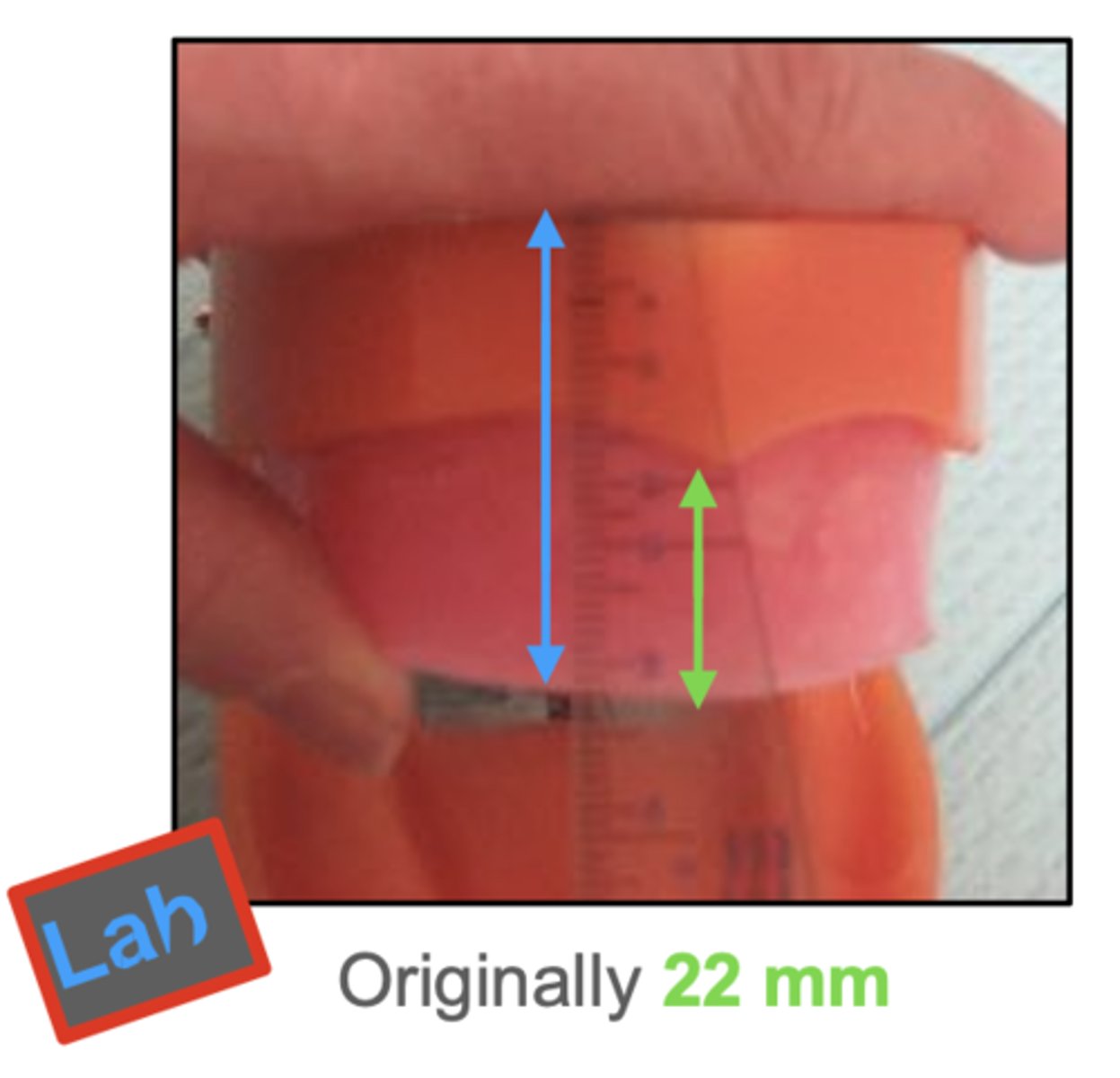
Esthetics of facial surfaces of maxillary central incisors
What does the adjustment of the anterior portion of the maxillary wax rim determine?
bisect the patient's face
How do you determine the midline clinically?
Labial frenum on the typodont
How do you determine the midline in lab?
facebow
What is an instrument used to record the spatial relationship of the maxillary arch to some anatomic reference points and then transfer this relationship to an articulator?
maxillary
What cast does the facebow orient?
- Two posterior points (ex: each mandibular condyle)
- One anterior reference point (ex: Frankfort plane)
What are the three reference points when taking a facebow?
facebow records
These are purposes of what?
- To articulate the maxillary cast in relation to the condylar hinge axis (so transfer the arc of closure)
- To evaluate the patient's esthetics relative to the horizontal plane (inter-pupillary line)
- To orient the maxillary cast to the center of the articulator.
facebow records
These are indications for what?
-When restoring a patient in bilateral balanced occlusion.
-Restoring maxillary anterior teeth by means of fixed or removable restorations
facebow (ear bow) assembly
What is this?
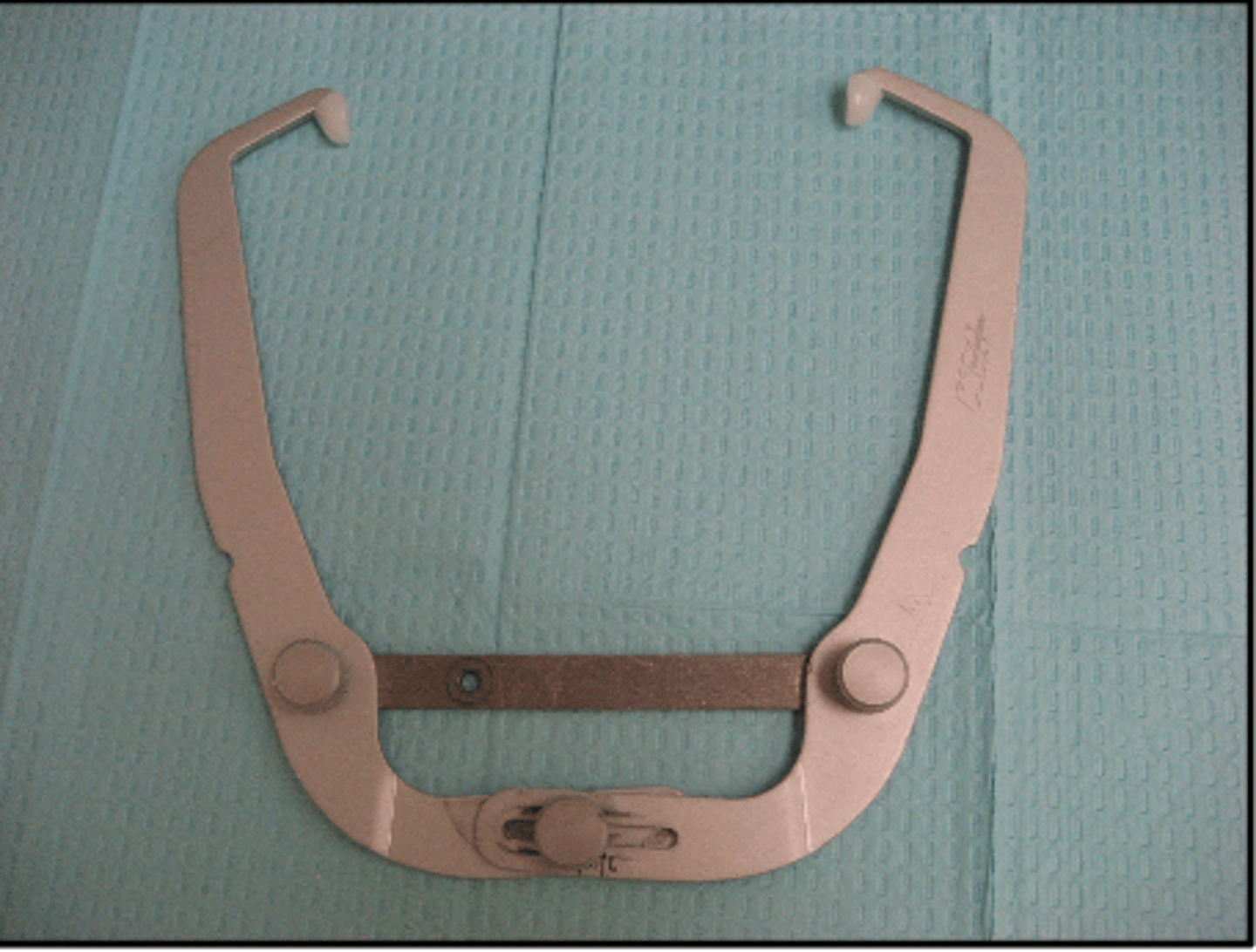
bite fork
What is this?
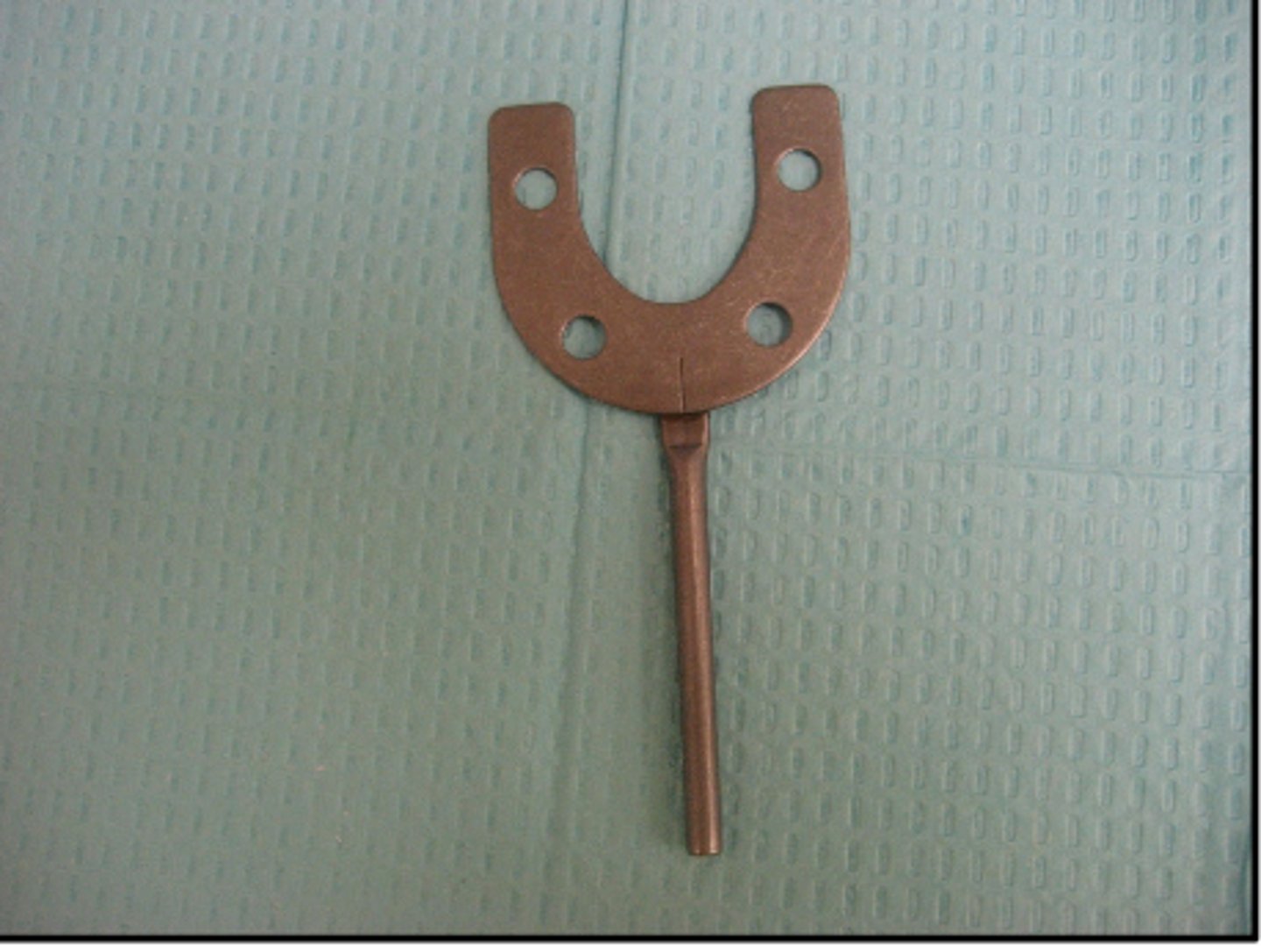
nose block assembly
What is this?

locking screw
What is 1?
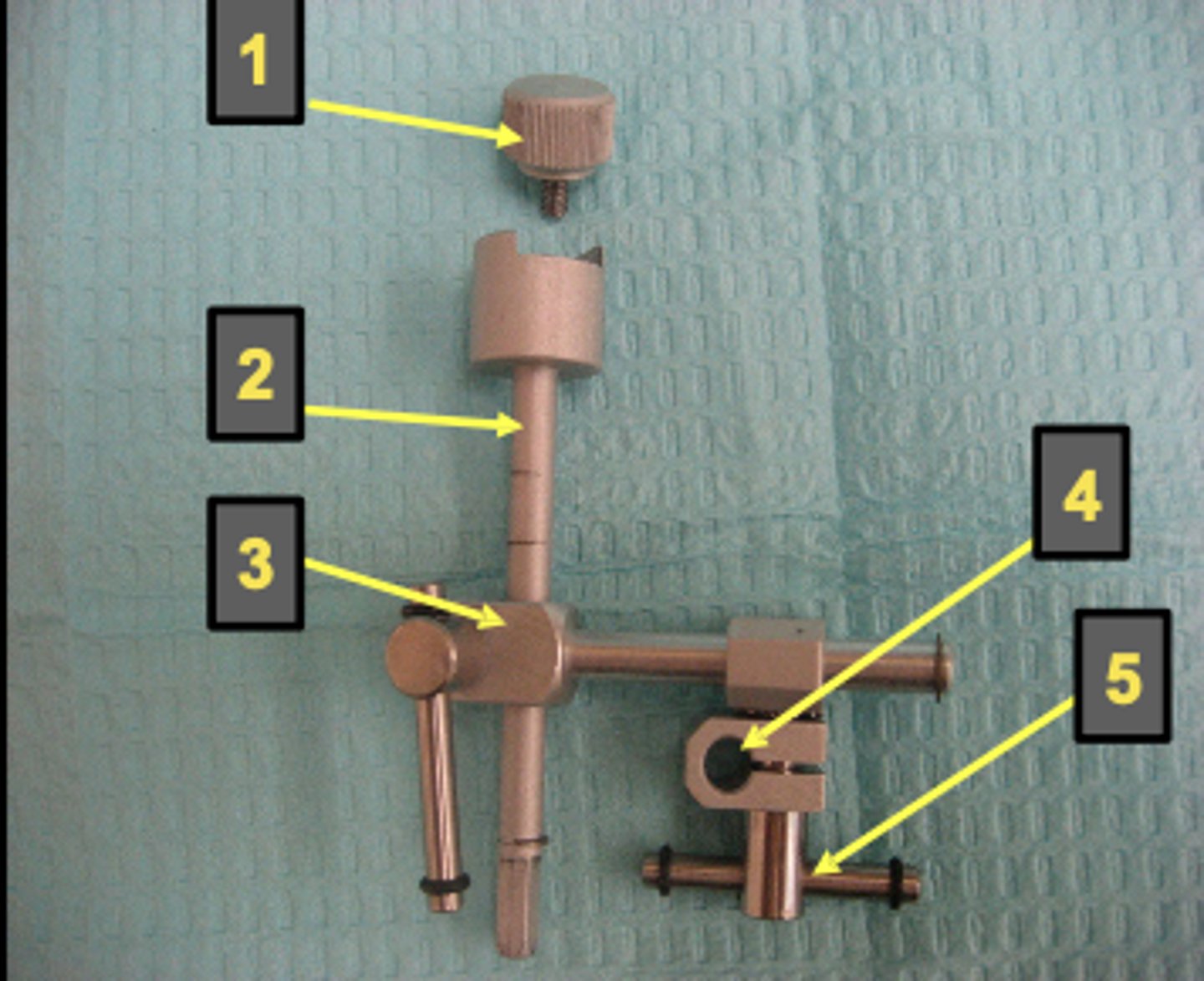
vertical rod
What is 2?
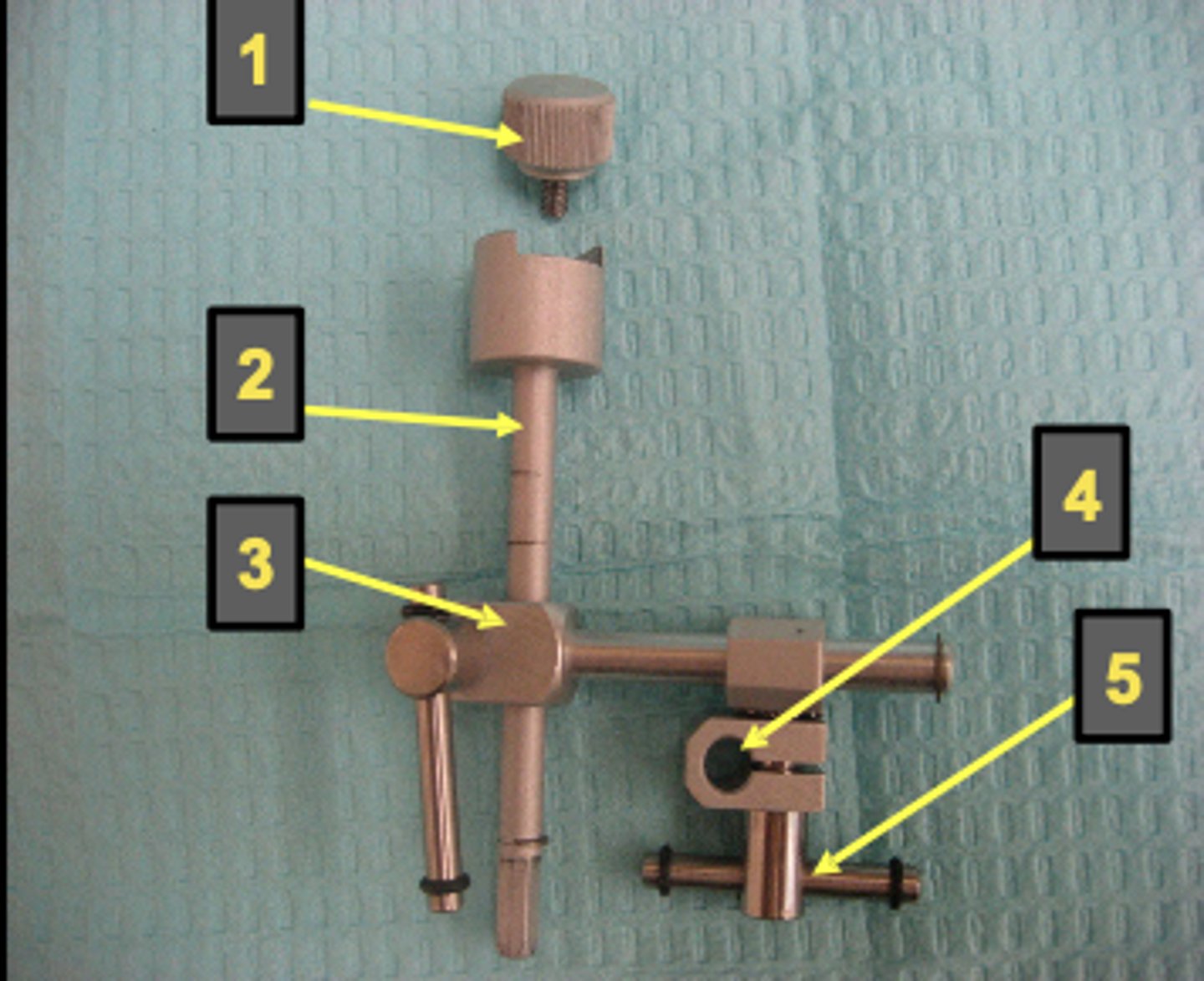
horizontal clamp
What is 3?
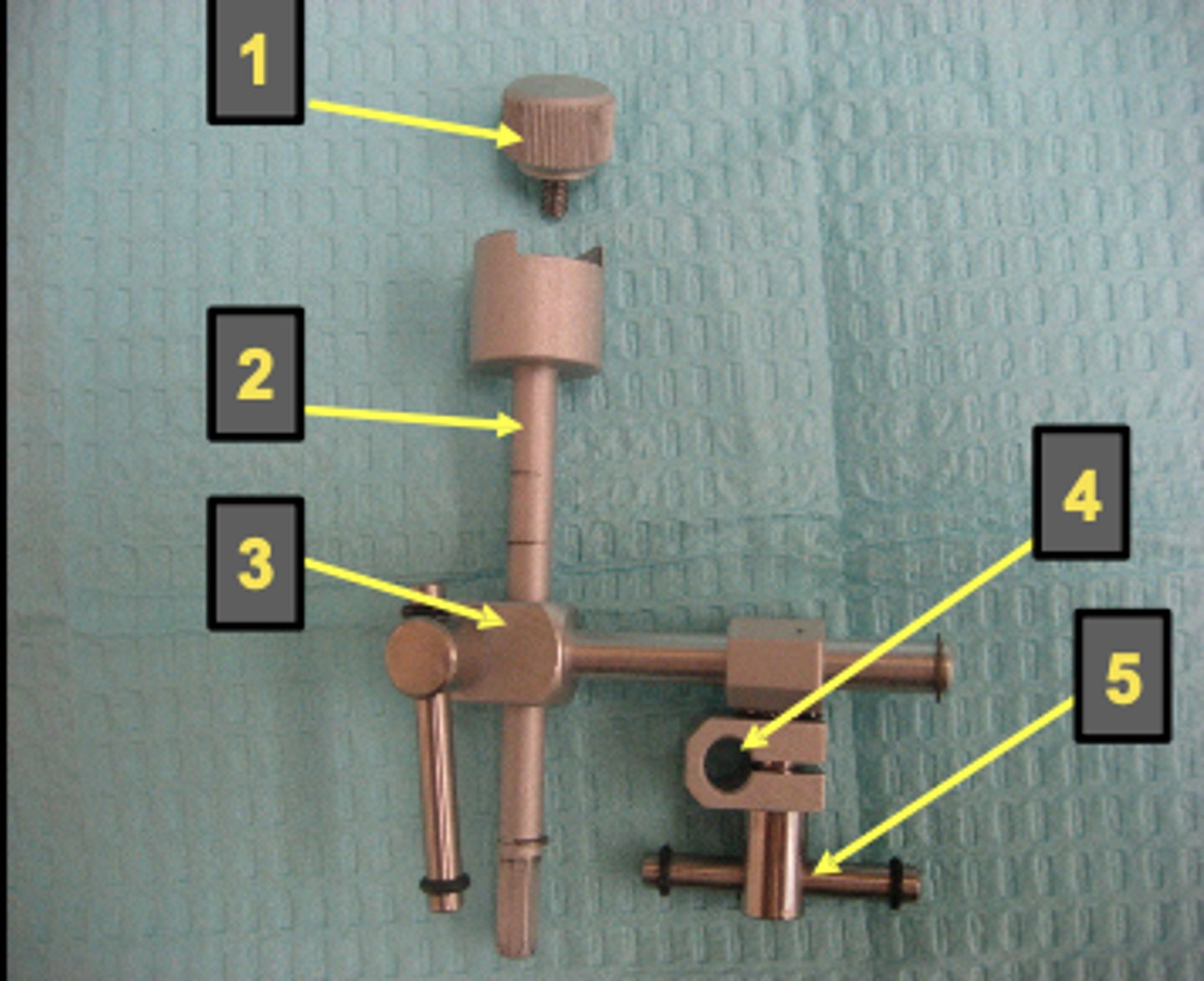
toggle clamps
What is 4?
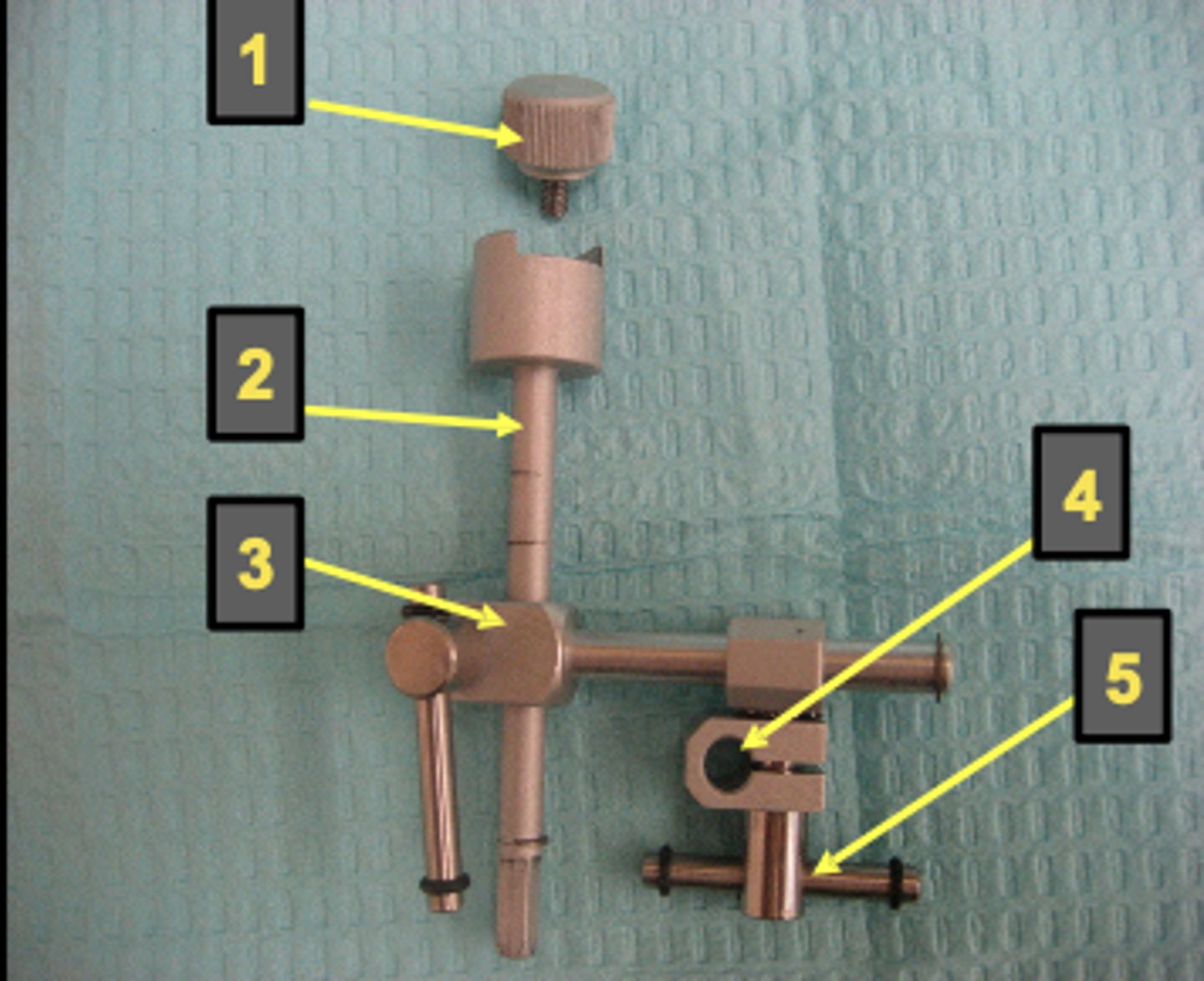
"T" screws
What is 5?
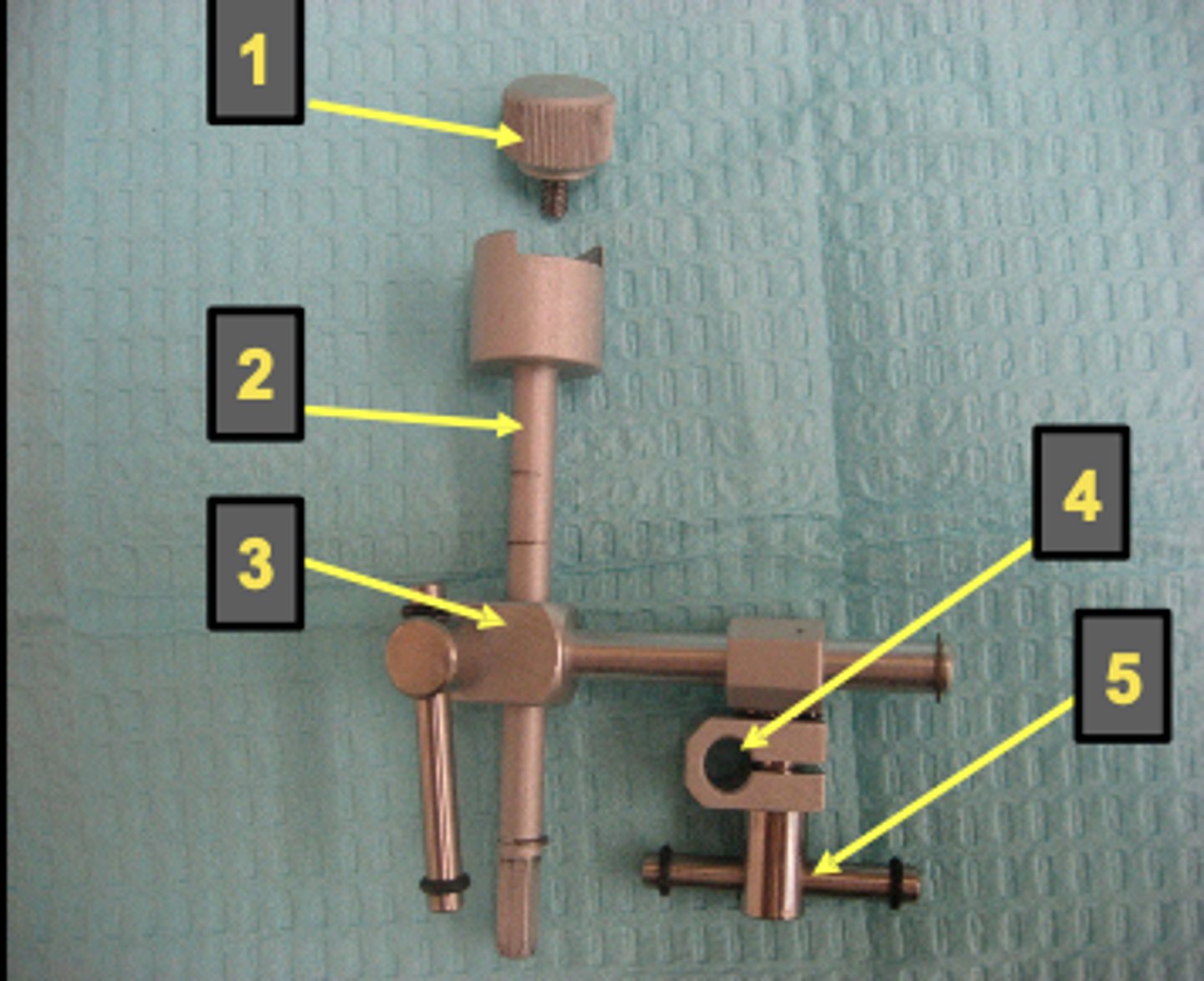
support bar
What is 1?
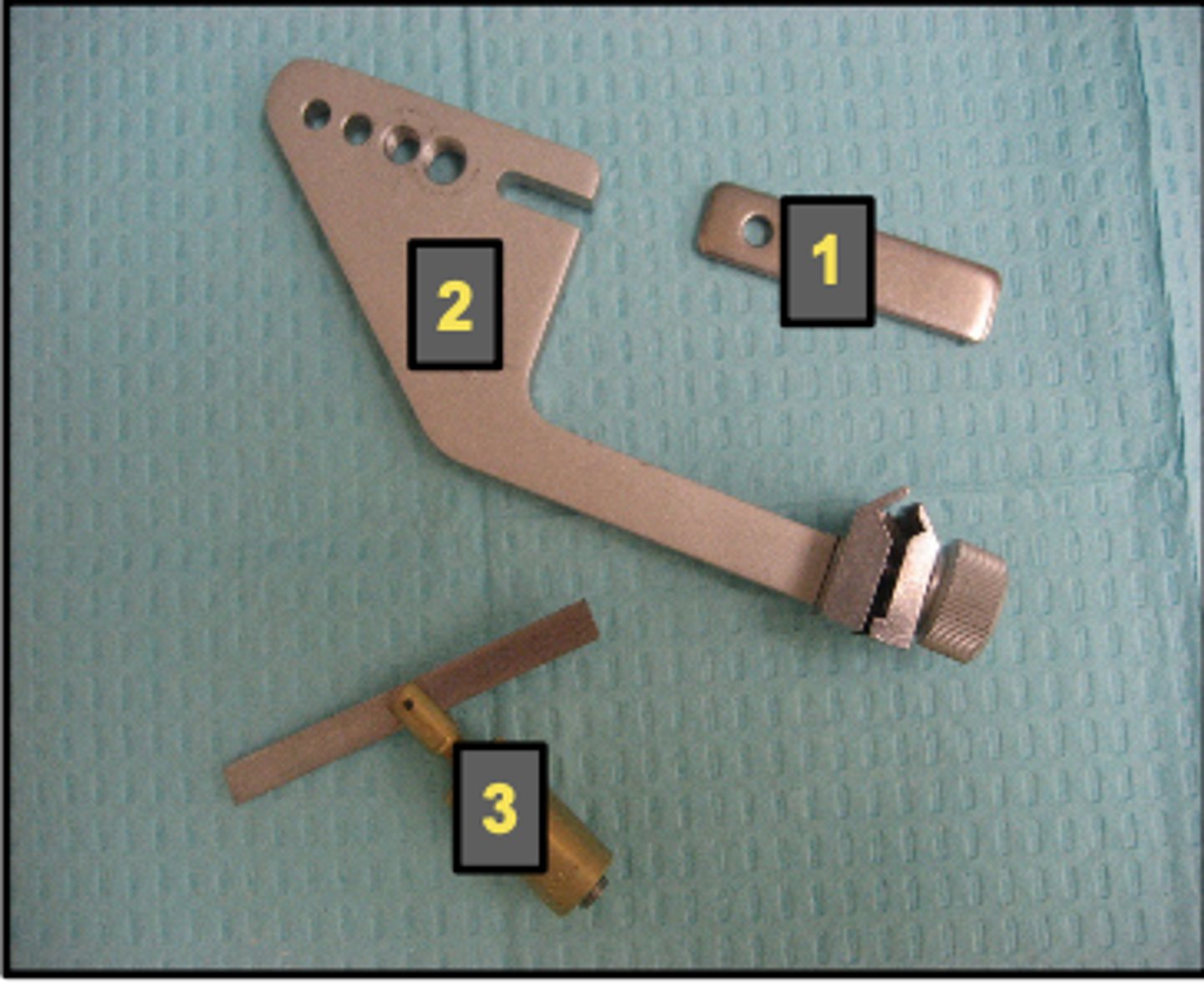
transfer base
What is 2?

cast support
What is 3?
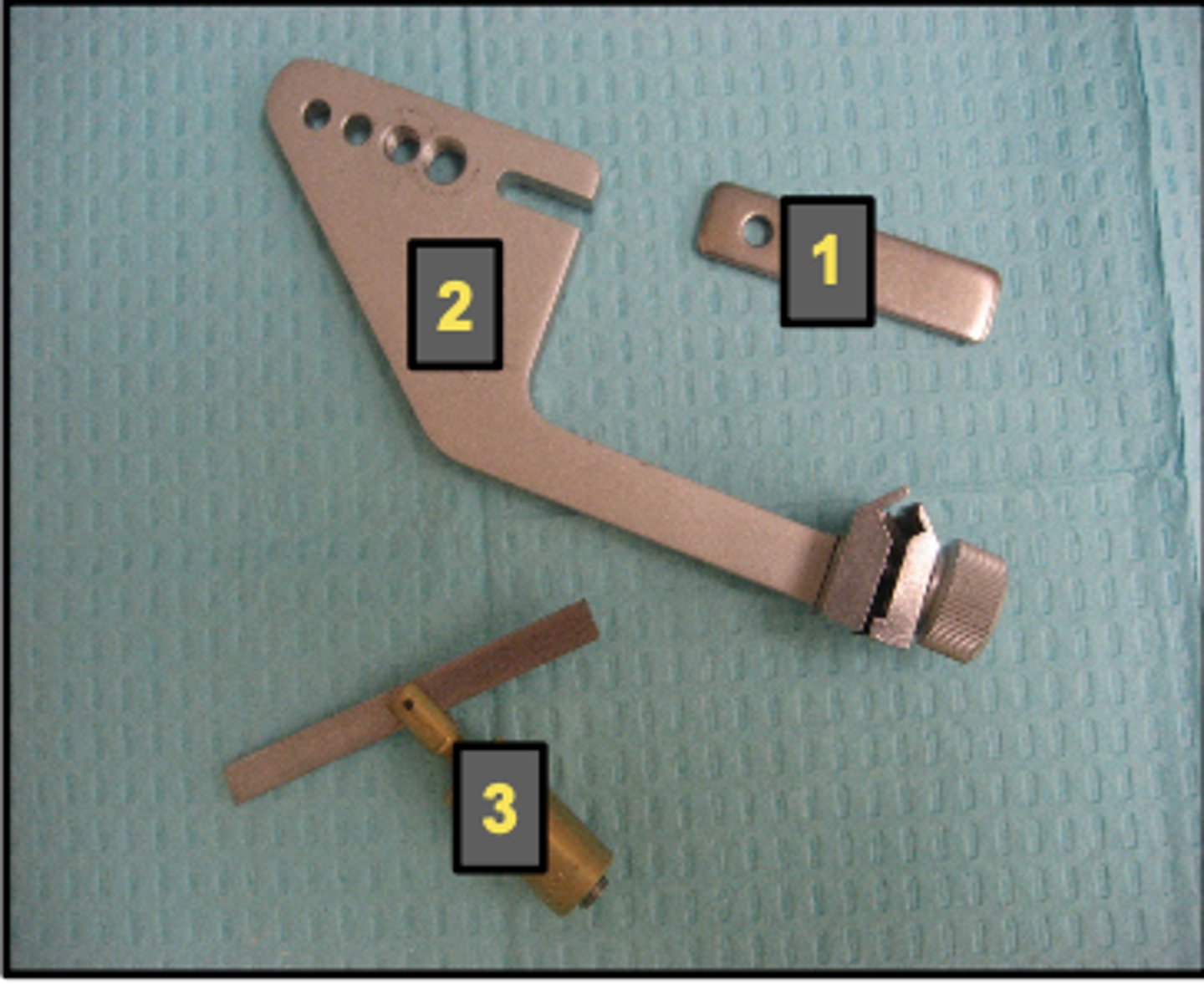
desired VDO
What do you adjust the mandibular wax rim to?
Heat half of the Aluwax and apply it to one side of the bite fork
When preparing the bite fork for a facebow record, what is the FIRST step?

Press the maxillary record base and wax rim into the soft wax
After applying softened Aluwax to both sides of the bite fork, what should be done next?
Avoiding any distortion of the wax rim
When positioning the maxillary rim on the bite fork, what is MOST important?
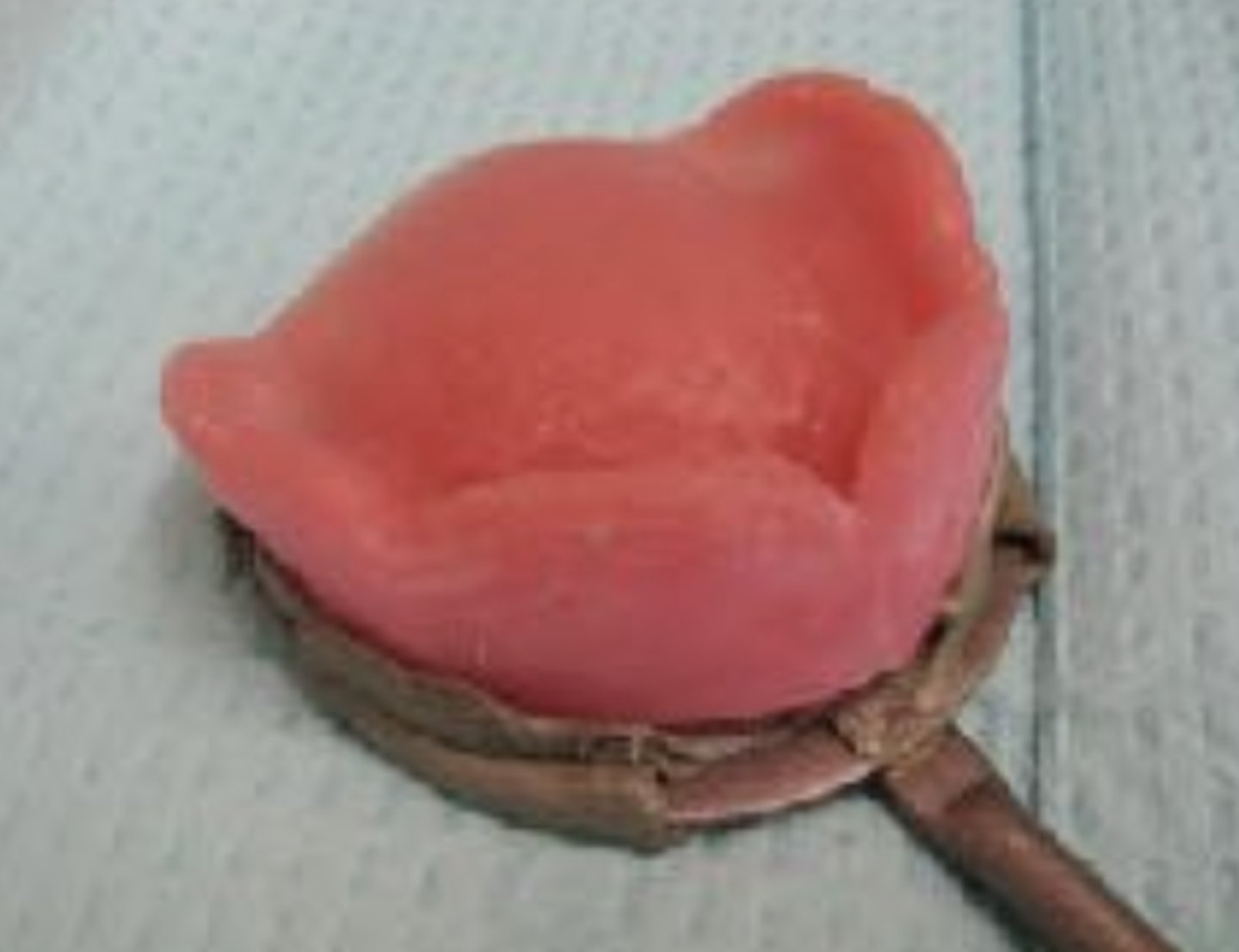
The facebow locking screw
The transfer assembly is attached to the facebow assembly using which component?
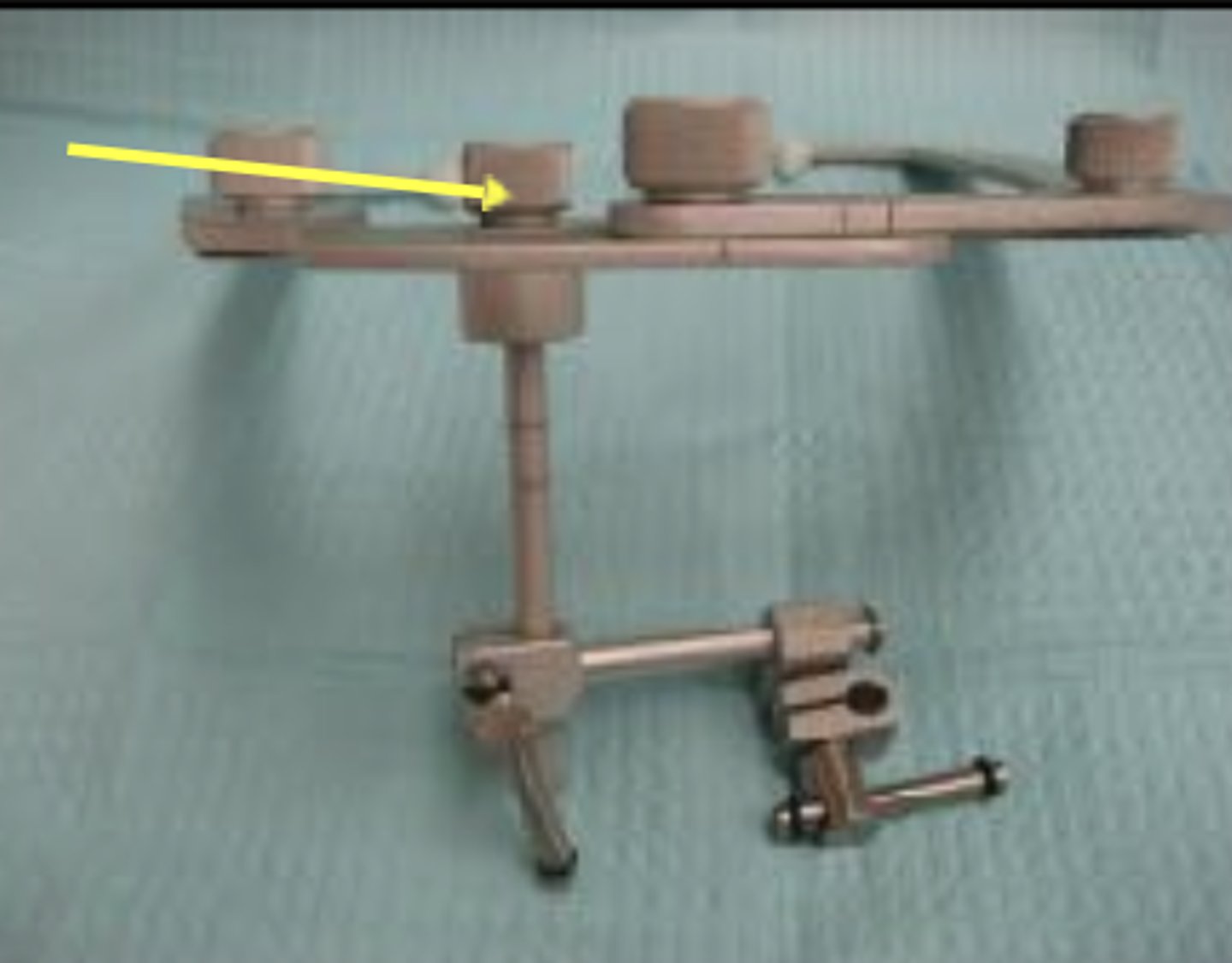
They are loosened
Before making the facebow record, what should be confirmed about the "T" screws?
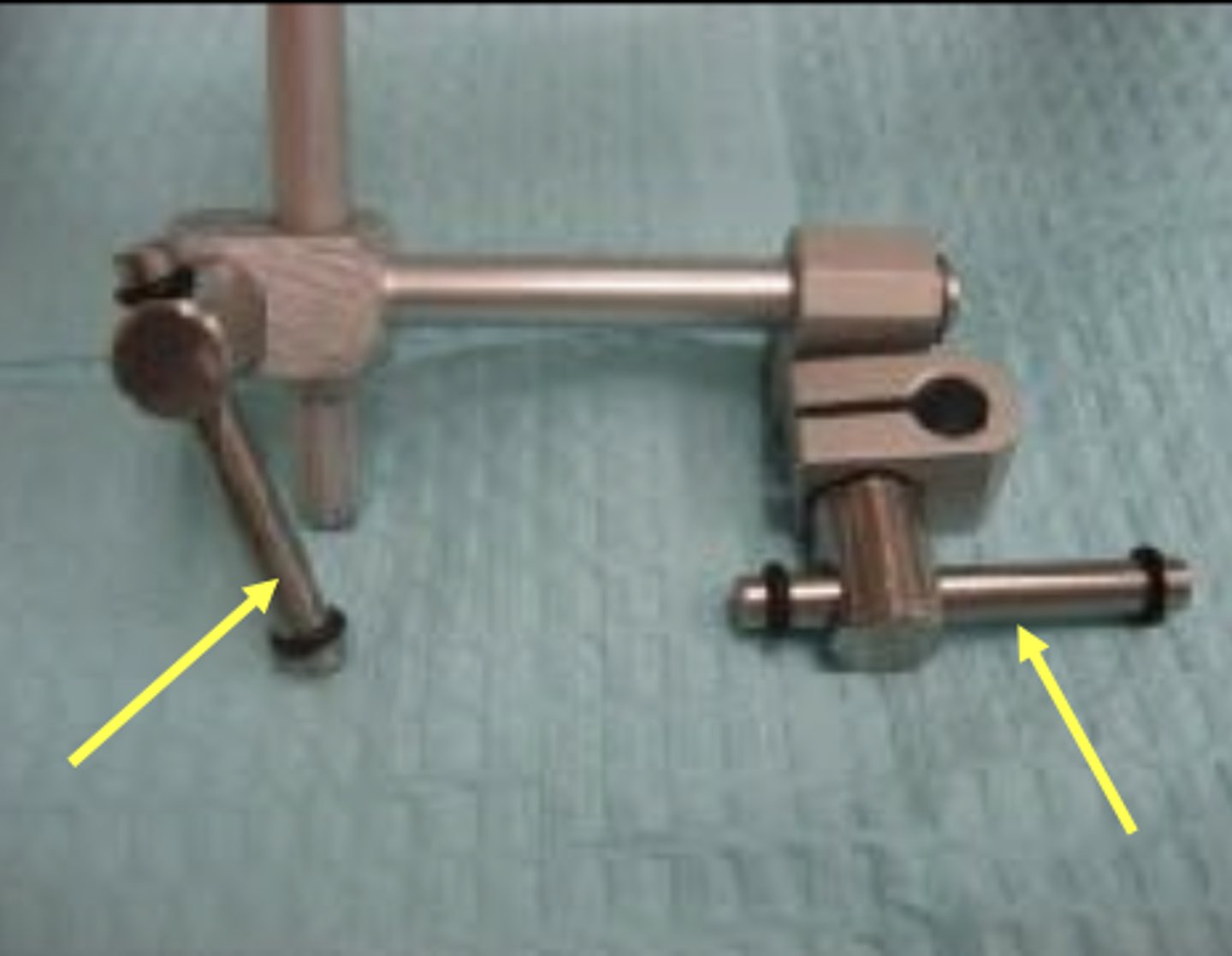
To lock the transfer assembly onto the facebow
What is the purpose of the facebow locking screw?
Onto the tiny pins at the ends of the horizontal bar
When attaching the facebow to the typodont, where do the plastic ear tips go?

Tighten the front facebow knob
What must be done before sliding the bite fork shaft into the open toggle?

The earbow must be parallel to the top of the typodont
When seating the record base-wax rim on the maxillary arch, what alignment is essential?
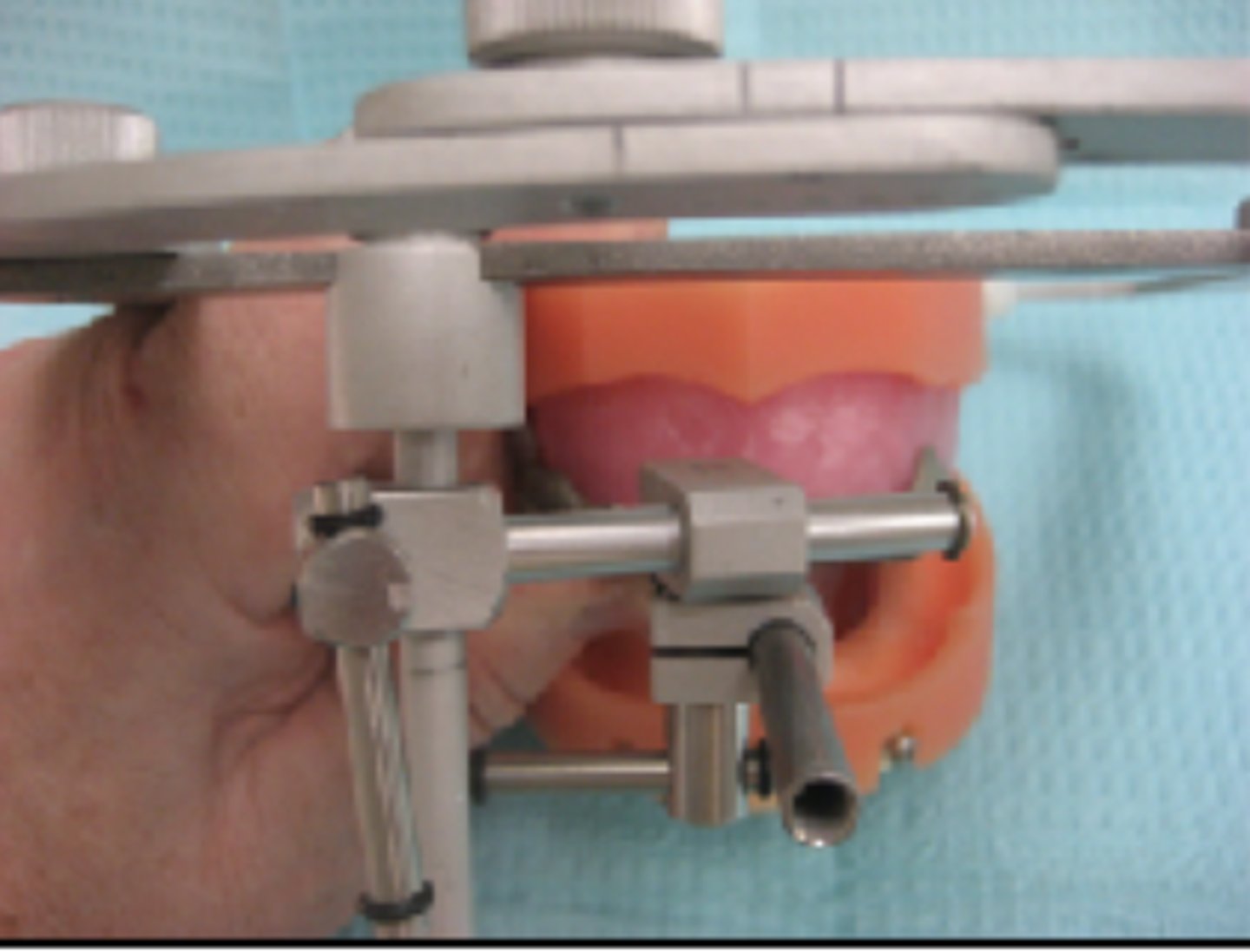
To prevent shifting before and during cast mounting
Why are the "T" screws tightened multiple times?
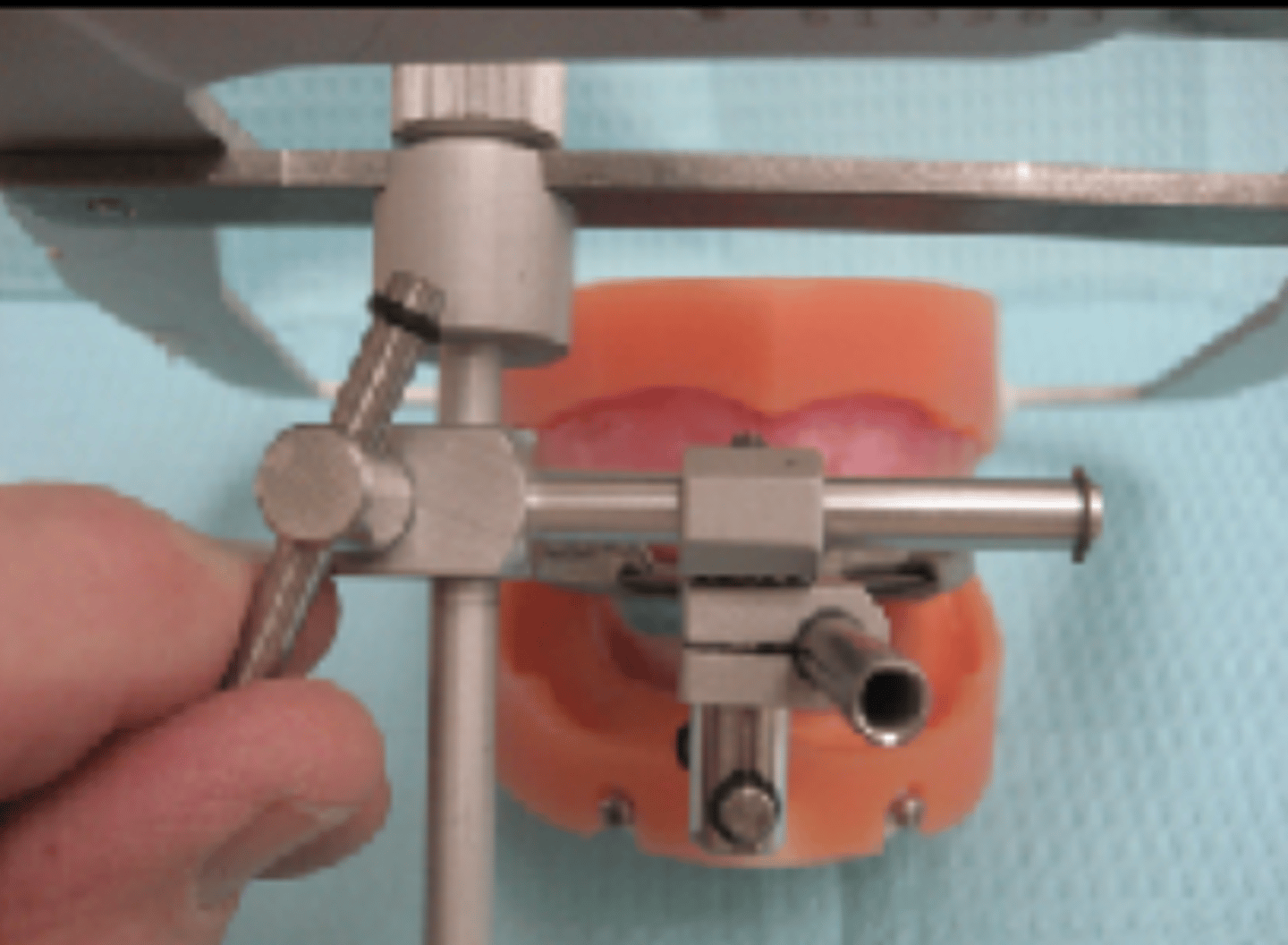
- Vertical dimension of rest
- Vertical dimension of occlusion (VDO)
When finding VDO in a patient, what two vertical dimensions are needed?
free-way space (3mm)
What is the difference between the vertical dimension of rest and vertical dimension of occlusion in a healthy and mature adult?
65 mm
On the typodont, what dimension do you want to adjust the screw to from the top of the upper segment to the bottom?
Once the desired VDO is established
When do you take the centric relation?
place tip of tongue to back edge of maxillary record base
To determine centric relation, you have the patient bite several times, once consistent- bases, adjusted rims and bite registration are placed in the mouth, what do you tell them to do next?
slowly and easily close, tell them to stop once they are closed
After tongue is in the back of the mouth, while gently holding the mand. base in place and not pushing them, what do you tell the patient to do next?
Dead soft
When heating the Aluwax for the bite registration, you can heat the wax using a Bunsen burner and/or hot water until it is __________

Put the tip of your tongue to the back of the upper base plate and close
When the patient bites on the Aluwax, where should you tell the patient to place their tongue?
- It is an effort to avoid having any undetected premature contacts
while we are taking the registration.
- If there is any premature contact of the hard wax rims, it would
cause the record bases to displace.
Why do we make our occlusal registration with 2 mm of Regisil or softened Aluwax bite registration material between the maxillary and mandibular wax rims?
Pinch nose, hold tongue down, blow hard
How is the posterior limit of the maxillary denture determined intra-orally?
posterior aspect of posterior palatal seal (PPS)
The posterior aspect of the maxillary denture is also what?
fovea palatini
What are the depressions located in the posterior aspect of the maxillary cast just to the left and right of the midline?
posterior limit of maxillary denture (Dr. Akhtar does not agree with this !)
Some techniques use the fovea palatini as a reference point for determining what?
- Valsalva maneuver (pinch nose and blow through nose)
- Say long ah
What does Dr. Akhtar believe is the only reliable way to locate the vibrating line?
Fovea palatini
What structure is marked in red and the PPS is placed 5mm anterior to?
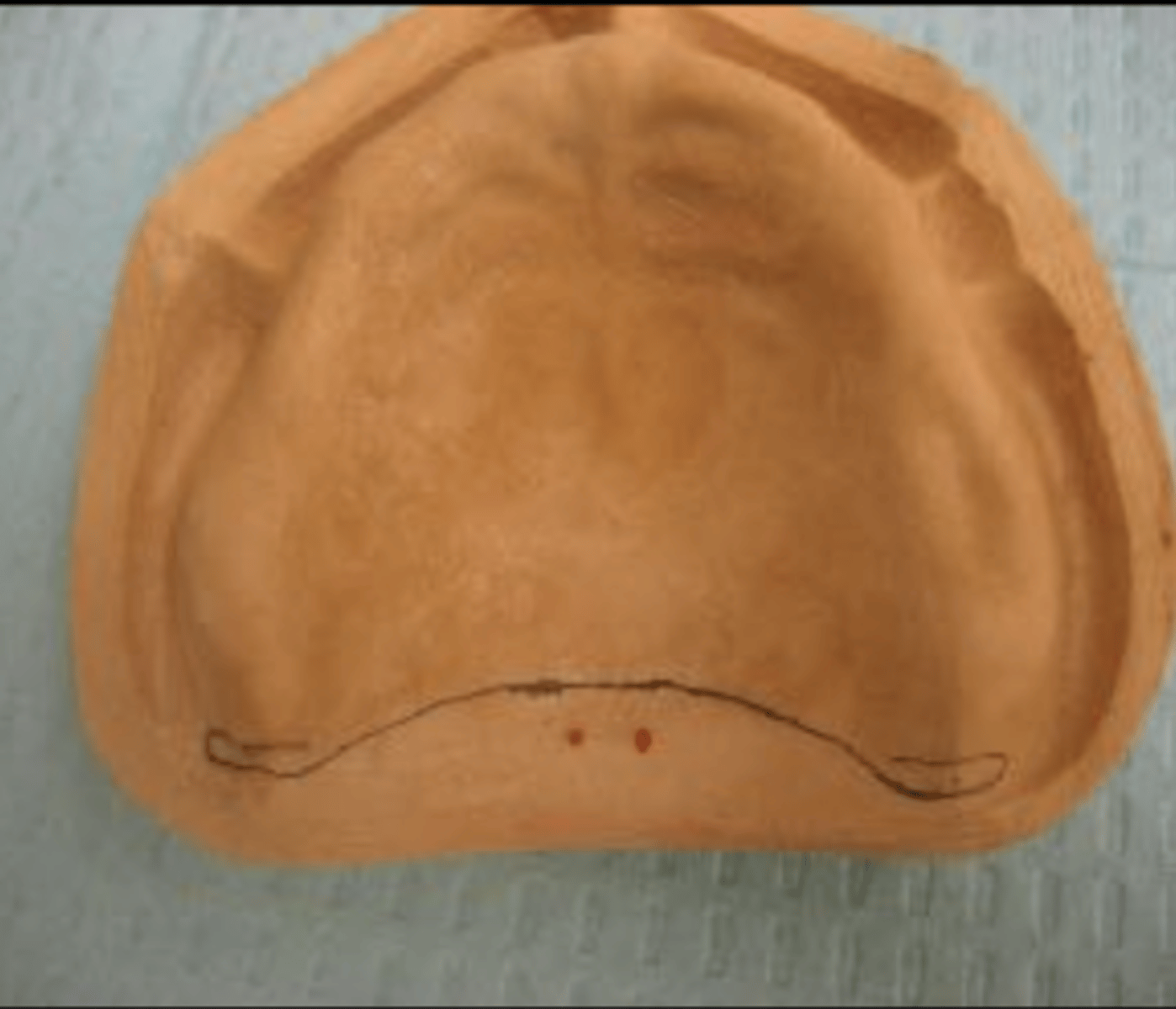
border molding
What forms a seal around the periphery of the maxillary denture from the left hamular notch to the right hamular notch but not across the posterior palatal area?
intraoral palpation of post dam area with rounded instrument
How is the depth of the posterior palatal seal determined clinically?
compressing, but not impinging
We must establish the posterior palatal; seal in this area in a different manner: By _________, but not _________ upon, the tissues at the posterior aspect of the palate, we are able to seal out the air between the denture and the patient's denture bearing tissues when their maxillary denture is in place.
Isthmus of the posterior dam
What is the line called that is drawn 3mm anterior to the posterior line at the midline?
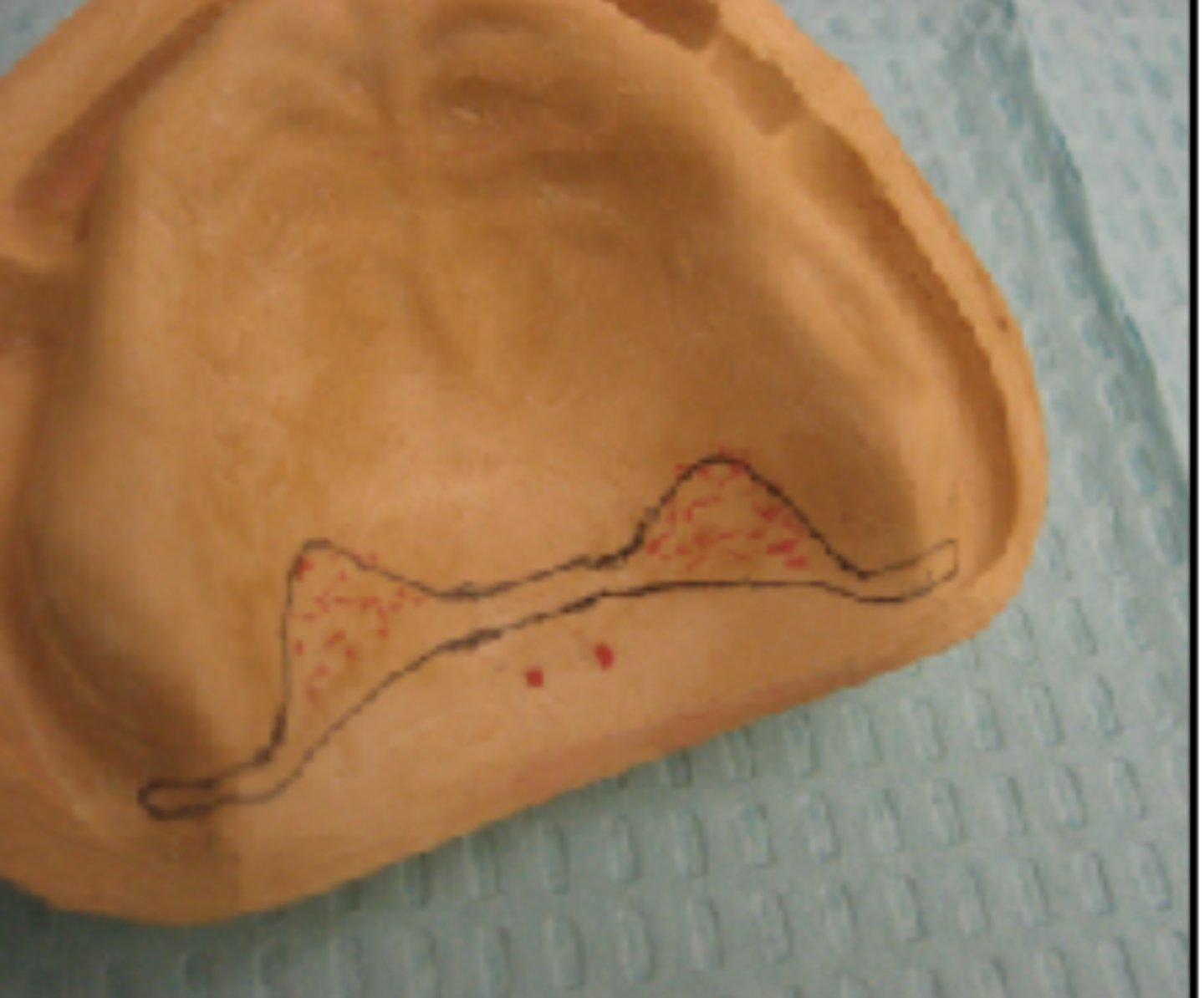
2mm
Clinically, The depth of the posterior palatal seal would be determined intra-orally by palpation of the post
dam area with a rounded instrument.
In the lab, what is the depth of the posterior aspect of the post dam predetermined to be?
2mm
Using a #8 round bur in the high speed hand-piece, create a channel at the posterior line of the post dam outline.
How deep should this channel be?

Square: Cleoid
Relief: Cleoid or lab knife
What instruments can you use to square the channel created here and relieve it?
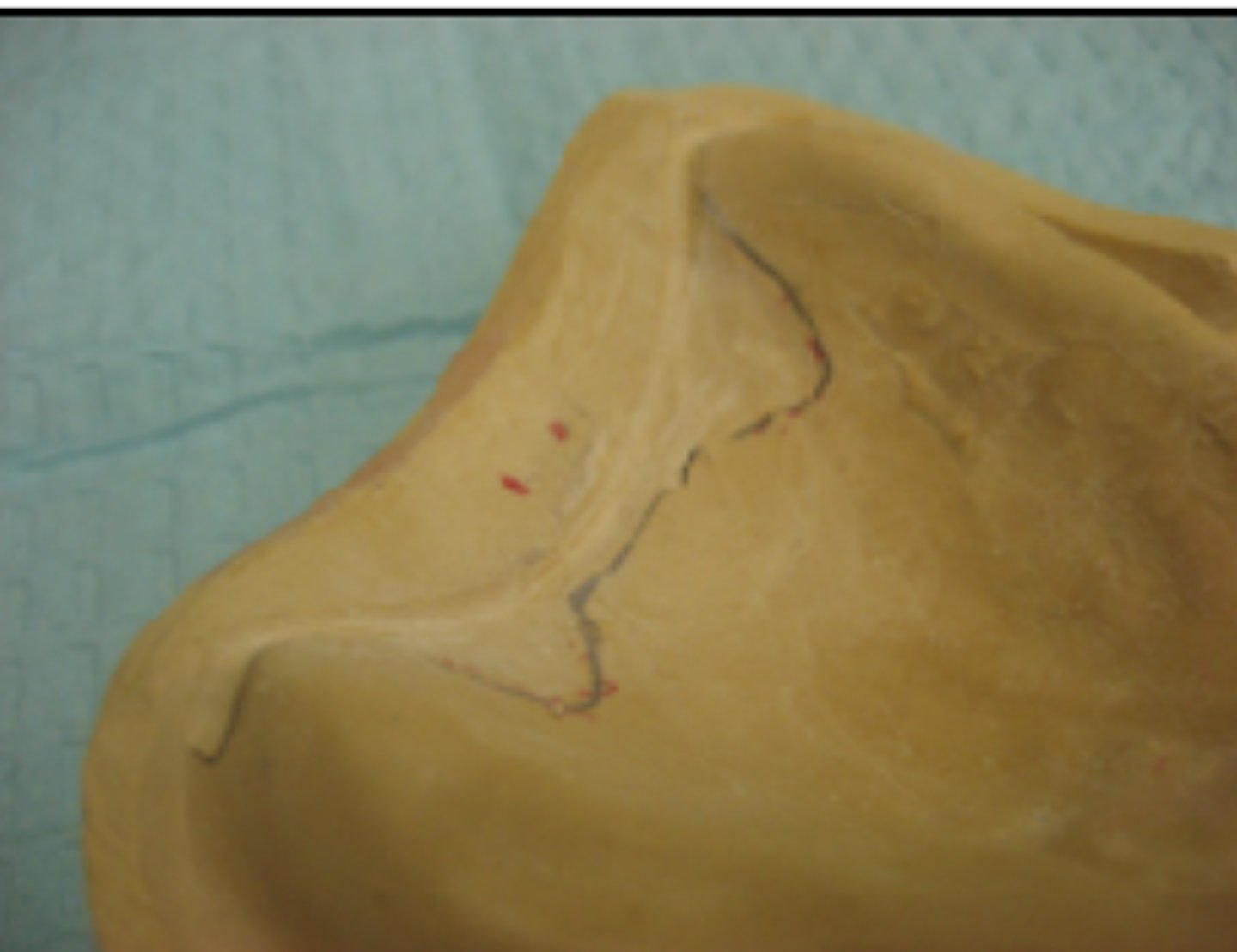
- Until it is even with the posterior limit line of the maxillary denture.
- Or, when it is even with the back edge of the post dam.
When do you keep reducing the base with a pineapple acrylic bur to?
